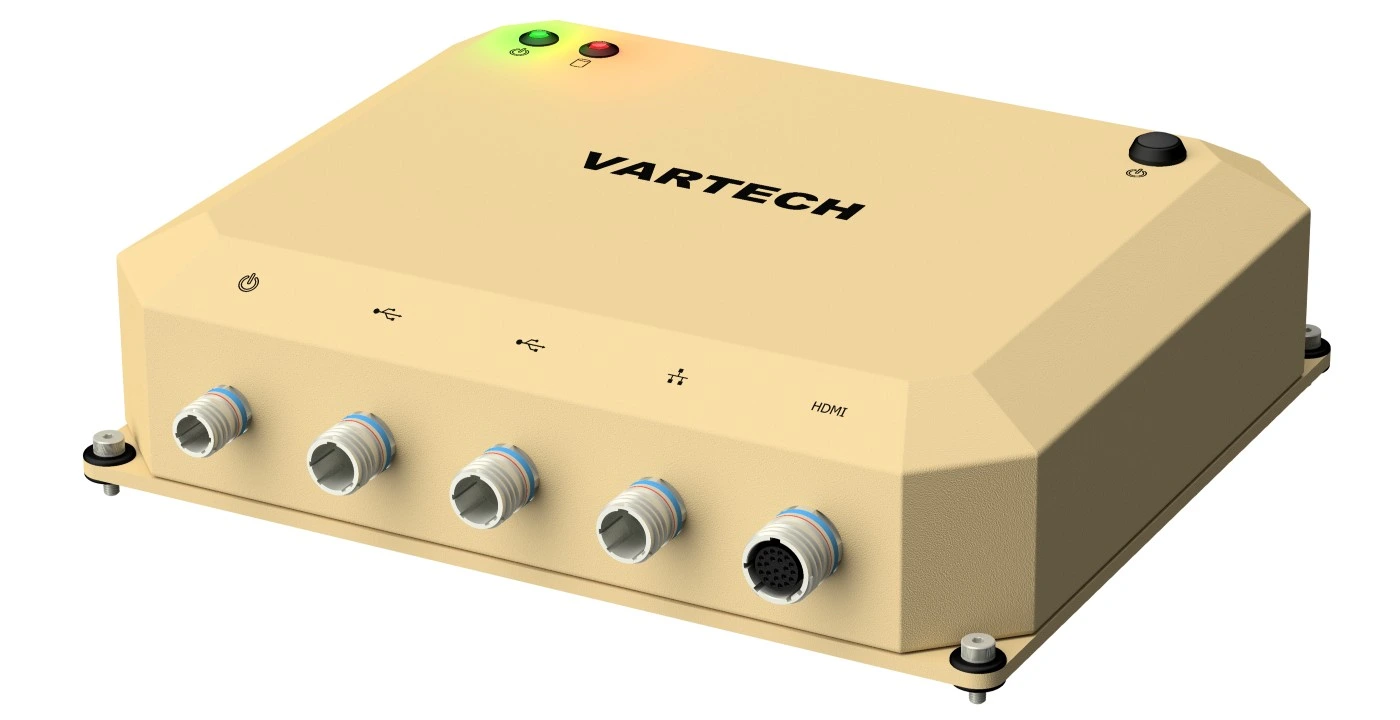
Modern military operations integrate dozens of electronic systems within confined spaces: communication radios, navigation equipment, radar installations, and computing systems, all of which need to function reliably despite their proximity.
The U.S. military relies on strict EMI standards, such as MIL-STD-461, to ensure operational safety and mission success.
Without proper electromagnetic interference (EMI) control, these systems can disrupt each other’s operation, compromising mission success and endangering personnel. EMI shielding ensures that these critical systems work together.
Adhering to these standards is of critical importance for achieving reliable performance and compliance in military operations.
Electromagnetic interference occurs when electronic devices generate unwanted electromagnetic emissions that disrupt nearby equipment.
Every electronic device produces electromagnetic fields as a byproduct of operation, whether through high-frequency digital processing, power switching, electrical interfaces, or power leads, as well as radio frequency transmission.
Military environments present particularly challenging EMI scenarios due to multiple high-power electromagnetic sources operating in close proximity:
In addition, military environments are characterized by high levels of magnetic field emissions and the presence of strong rf (radio frequency) signals, which further complicate EMI control.
Uncontrolled EMI creates serious operational risks that can compromise military effectiveness:
Maintaining reliable performance is essential for mission-critical military operations, and uncontrolled EMI directly threatens this objective.
EMI shielding applies Faraday cage principles to contain electromagnetic emissions and protect sensitive electronics.
A Faraday cage is an enclosure made of conductive material that blocks both the electric and magnetic field components of electromagnetic waves: When electromagnetic waves hit the conductive surface, they induce electric currents that create an opposing electromagnetic field, effectively canceling out the original field inside the enclosure.

When electromagnetic waves encounter conductive barriers, they undergo reflection, absorption, or attenuation, preventing interference from reaching protected equipment. Shielding effectiveness depends on material properties, construction methods, and the frequency characteristics of the electromagnetic signals being controlled.
Military applications employ several distinct approaches to electromagnetic protection:
Each approach addresses different aspects of electromagnetic compatibility while contributing to overall system reliability.

Effective EMI shielding requires specific materials and careful construction techniques:
Shielding design must also address input power leads to prevent EMI from entering or leaving equipment through these connections.
Radiated emissions and susceptibility are at the heart of electromagnetic compatibility for military equipment. In complex military environments, electronic systems must not only avoid emitting unwanted electromagnetic signals that could disrupt other equipment, but also withstand powerful electromagnetic fields generated by nearby systems.
Radiated emissions are the unintended electromagnetic signals that escape from electronic equipment and its associated cabling into the surrounding environment. These emissions can interfere with other military systems, leading to undesired signals, cross modulation, or even system malfunctions.
To prevent this, MIL-STD-461 establishes electromagnetic interference (EMI) limits for radiated emissions, ensuring that each piece of military equipment remains within specified limits for electric field emissions and does not compromise the performance of other equipment in the vicinity.
Radiated susceptibility refers to a system’s ability to operate reliably when exposed to external electromagnetic fields, such as those produced by radar, communication transmitters, or other high-power sources.
Military systems must be able to withstand radiated magnetic fields and electric fields without experiencing performance degradation or failure. This is especially critical for safety critical equipment and systems deployed in environments with high electromagnetic field strengths.
MIL-STD-461 defines rigorous test procedures for both radiated emissions and radiated susceptibility.
During testing, the equipment under test (EUT) and its associated cabling are exposed to controlled electromagnetic fields across a wide range of frequency ranges. The tests measure the EUT’s electric field emissions and its ability to withstand radiated magnetic fields, ensuring compliance with the specified requirements for the intended operational environment—whether on the ground, in the air, or at sea. MIL-STD-461 primarily targets subsystems and individual pieces of military equipment for EMI testing.
Test procedures are tailored to the unique challenges of various military systems and installation locations. For example, equipment installed near powerful transmitters or in densely integrated platforms may face stricter test levels and limits. By adhering to these military standards, the U.S. military ensures that all electronic equipment can operate reliably, maintain electromagnetic compatibility, and avoid contributing to or suffering from electromagnetic environmental effects.
Standardized MIL-STD-461 testing promotes interoperability among various manufacturers' electronic systems operating in close proximity.
Controlling radiated emissions and ensuring radiated susceptibility are essential for the dependable operation of military equipment. Through the application of MIL-STD-461, military systems are tested and certified to meet stringent electromagnetic interference requirements, supporting mission success and operational safety in even the most demanding electromagnetic environments.
EMI interference compromises military equipment performance in several critical ways:
System level testing is used to validate the reliability of integrated military systems under realistic electromagnetic conditions.
Mission success increasingly relies on coordinated operation between multiple electronic systems. Weapons platforms require precise control of signals, while situational awareness depends on seamless integration between radar, sensors, and communication equipment.
When electromagnetic interference causes any system to malfunction, the effects can cascade through interconnected systems, resulting in mission degradation or failure.
Adherence to defined test limits is essential for ensuring that military systems can perform their missions without EMI-related failures.
Operational security concerns add another layer of complexity to EMI requirements. Uncontrolled electromagnetic emissions can reveal unit locations and activities to adversaries equipped with direction-finding equipment.
Electronic intelligence gathering has become sophisticated enough to identify specific equipment types and operational patterns from electromagnetic signatures, making proper EMI control essential for maintaining stealth capabilities and preventing information leakage through unintended electromagnetic channels.
MIL-STD 461 is a military standard upheld by the United States Department of Defense that establishes comprehensive EMI control requirements covering both equipment emissions and susceptibility to external interference. This standard has evolved over decades to address increasingly complex electromagnetic environments, and compliance is typically mandatory for military equipment procurement and deployment.
MIL-STD 461 organizes EMI control into two primary categories, each with two subcategories. The primary purpose of MIL-STD-461 is to establish standardized testing methodologies to evaluate the electromagnetic compatibility (EMC) of military equipment.
Susceptibility requirements define the ability of equipment to operate as intended when exposed to electromagnetic interference. In particular, subsystem AC power inputs are specifically tested for susceptibility to voltage transients and electromagnetic interference (EMI) to ensure reliable operation and compliance with standards.
Emission requirements limit the amount of electromagnetic energy that equipment can emit, preventing interference with other systems.
Emissions control also includes limiting emissions and radiated signals to ensure compliance with standards and prevent interference with other systems.
Susceptibility requirements include the ability to withstand electric fields and withstand signals coupled onto cables and power leads.
MIL-STD 461 specifies two primary approaches to EMI shielding based on the directions from which equipment must contain electromagnetic emissions.
Antenna ports and related interfaces require special attention in EMI protection strategies, as they are critical points for susceptibility to RF signals, intermodulation, and undesired signal rejection.
All-Surface (AS) protection requires complete electromagnetic containment from all directions, providing 360-degree EMI shielding around the entire equipment's enclosure.
This comprehensive approach is necessary for equipment operating in high-EMI environments where sensitive systems may be in any direction relative to protected equipment.
Front-Surface (FS) protection focuses on EMI containment primarily from the front-facing direction of panel-mounted equipment. This approach recognizes that some installations provide natural shielding from certain directions—such as equipment mounted within protective enclosures or against bulkheads—making comprehensive all-surface shielding unnecessary and cost-prohibitive.
The choice between AS and FS protection depends on installation configuration and electromagnetic environment assessment. VarTech's product portfolio of rugged computers and monitors include options with All-Surface and Front-Surface protection.
All-surface protection is typically required for equipment near radar installations, in communication-dense environments, or on multi-system integration platforms where EMI sources may surround the equipment.
Front-surface protection suits panel-mounted displays and controls, equipment with naturally protected rear installations, or systems where directional EMI exposure is acceptable based on operational requirements.
MIL-STD 461 compliance requires comprehensive testing and documentation:
MIL-STD 461 compliance testing includes exposing equipment to impulse signals, transients, and damped transients to simulate real-world electromagnetic disturbances. Tests also evaluate the ability to withstand transient electromagnetic fields and electromagnetic pulse (EMP) events.
Susceptibility testing involves verifying that equipment can withstand RF signals coupled onto input power leads, interconnecting cables, and antenna ports. Additionally, cross modulation products are assessed during receiver susceptibility testing to ensure robust performance in complex electromagnetic environments.
Ground systems face unique EMI challenges from tactical vehicle electronics operating near engine noise and high-power communication systems:
Naval applications present complex EMI scenarios due to metallic ship environments and high-power radar systems:
Aviation and aerospace systems require EMI shielding that is capable of withstanding extreme environmental conditions while maintaining electromagnetic compatibility:
Fixed installations including command centers, radar facilities, and computing centers require comprehensive EMI management for reliable operation of integrated systems from multiple manufacturers, ensuring electromagnetic compatibility across diverse equipment types and operational requirements.
Effective EMI management requires early planning and proper component selection:
Successful EMI shielding implementation depends on proper execution and ongoing maintenance:

ToughCube computers deliver compact computing power with integrated EMI shielding for space-constrained military applications.
Their IP67-protected enclosures provide comprehensive electromagnetic containment meeting MIL-STD 461 emissions requirements, while integrated shock mounting suits mobile platforms facing vibration and space constraints.

ToughStation products feature fully sealed enclosures with comprehensive EMI containment for applications in a broad range of display sizes.
Available in sizes from 10.4” up to 43”, ToughStation computers and monitors combine NEMA 4/4X and IP65/66 environmental protection with EMI shielding, offering versatile mounting options for vehicle-mounted and fixed installation applications.

All-Weather computers and monitors combine extreme environmental protection with MIL-STD 461 EMI protection for outdoor military applications.
IP67 and NEMA 6 protection ensures reliable operation in harsh weather, while integrated EMI shielding prevents interference with nearby sensitive equipment.
Operating temperature ranges from -40°C to 70°C support global military deployments, making these systems particularly valuable for naval bridge applications and field command centers requiring both environmental durability and electromagnetic compatibility.
EMI shielding prevents electronic interference between critical military systems through proper electromagnetic containment. MIL-STD 461 provides compatibility standards ensuring reliable equipment operation, while effective implementation protects mission success and operational security across all frequency ranges and operating conditions.
At VarTech Systems, our Project Managers—with an average of 15+ years of industry experience—are ready to customize a computer, monitor, or HMI workstation solution to meet your needs. Drawing from extensive backgrounds in manufacturing, military, oil and gas, and marine applications, they provide expert guidance throughout your project journey.
Please fill out our contact form, call us, or email us and we will connect with you shortly.

Based in Clemmons, North Carolina, VarTech Systems Inc. engineers and builds custom industrial and rugged computers, monitors, and HMIs.